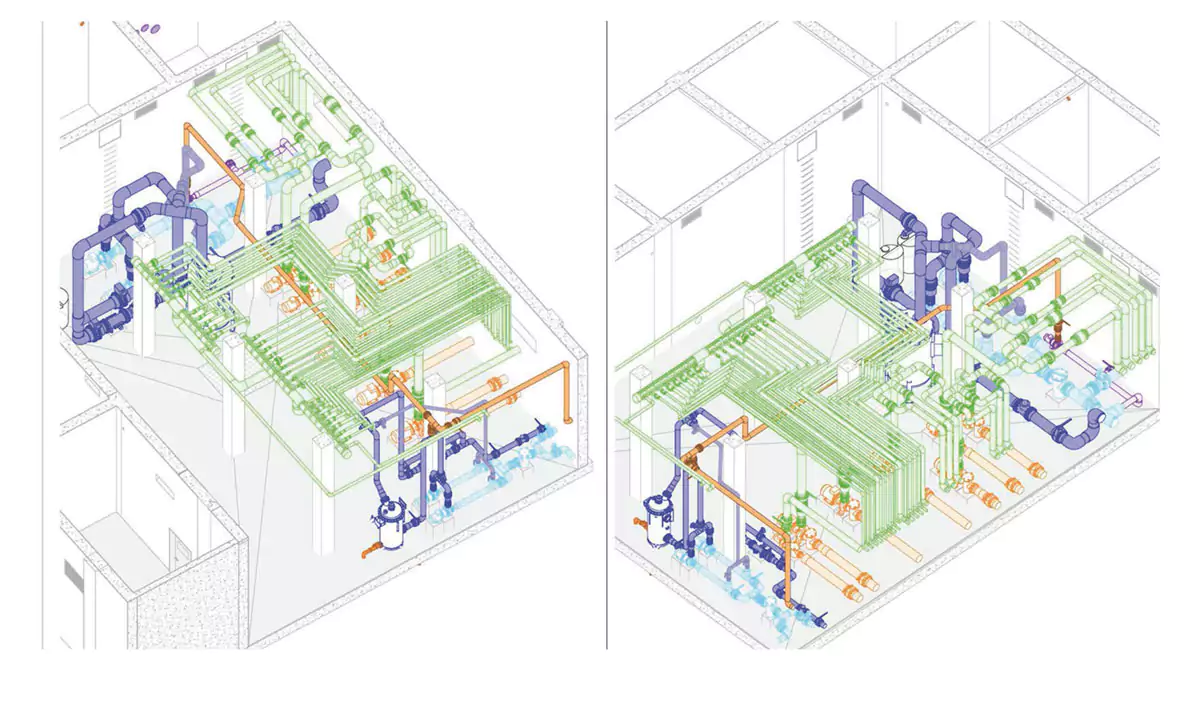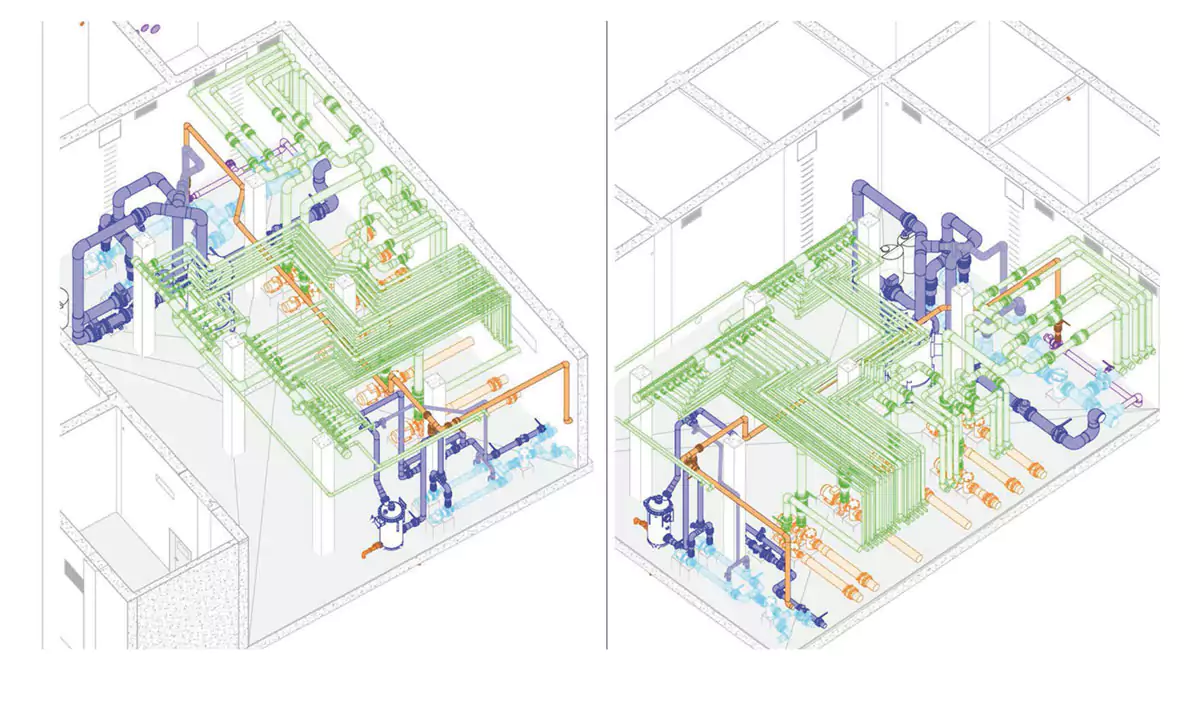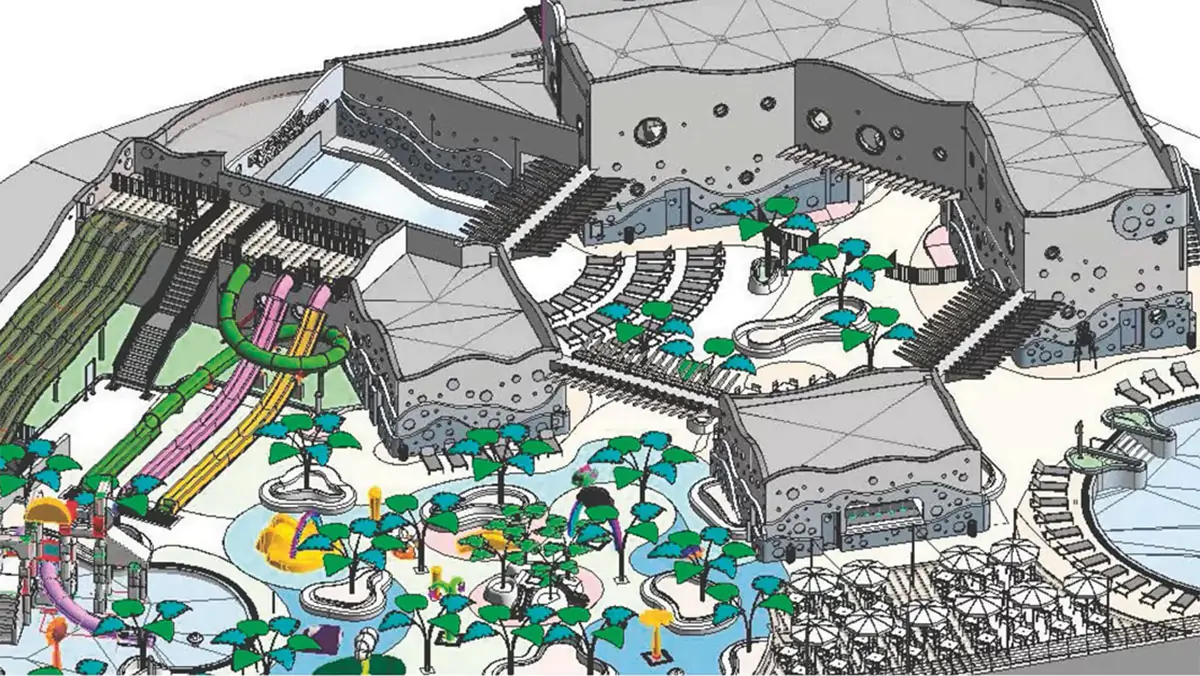Information technologies offer new possibilities for the design and development of complex projects such as those we carry out in Amusement Logic, whether they’re hotels or resorts, waterparks or theme parks, adventure parks, animal parks or any other leisure-destined installation. It doesn’t matter how innovative they are, like our Canyoning Parks, or if it’s a question of general architectural projects. Building Information Modelling (BIM), the system we work with every day, is one of those technologies.

It’s a work methodology, from a multiple, integral and collaborative perspective, that defines in detail all the aspects of the project’s disciplines. The result of the process is a collection of parameters and information, accumulated and superimposed in a digital space, which make up the project itself and are available to each of the technical departments involved. However, if at its beginning BIM had 3 dimensions of space, at its most advanced stage it has 7. This is BIM7D.

When a client contacts us to discuss a general idea of what they want to do, we offer the possibility of the BIM development of their project. Depending on their needs, up to 7 dimensions can be developed within the BIM environment:
– So, we start with the 1st dimension: we define the location and with the help of specialised software, we prepare sketches and illustrations to specify the idea with the first estimates of surface area, volumetry, zoning and costs, as well as a draft execution plan.
– The 2nd dimension corresponds to the technical fitting of the installation by means of 2D and 3D software. This gradually gives shape to the master plan, which includes the project’s main buildings and uses.
– The moment comes to raise it in 3 dimensions: now we obtain a complete graphic representation of the project. At the same time, we establish coordination between all the disciplines: architecture, structures, installations…; thus we avoid interference between them and minimise unforeseen events during execution.
– With the 4th dimension, we introduce the determination and control of costs and construction expenses into the workflow, fundamental information used to subsequently establish the project’s profitability.
– The 5th dimension consists of the temporal planning of the construction, so we can obtain a global vision of the process. This dimension is particularly useful when contracting our Construction Management services.
– The 6th dimension of the BIM project contains a multitude of parameters that define the physical characteristics of the modelled elements, which allows simulations to be carried out for different purposes, including those related to energy efficiency, sustainability and ecological footprint. The final objective is to choose the optimum, most profitable and most sustainable alternatives.
– At last, the time has come for the 7th and final dimension: this is the projection of the construction’s useful life, in terms of its use and maintenance. This dimension includes a forecast of the inspections, the wear and tear of the installations, the necessary repairs, etc.


So, with BIM7D, we meticulously define our constructions from an integral perspective, all without having yet laid the first brick. Once we have all the project’s parameters and dimensions, we can lay that first brick in full knowledge of the facts.
In this video, you will see a sample of what a BIM project looks like.
Sources: BIM space, Building Smart.






